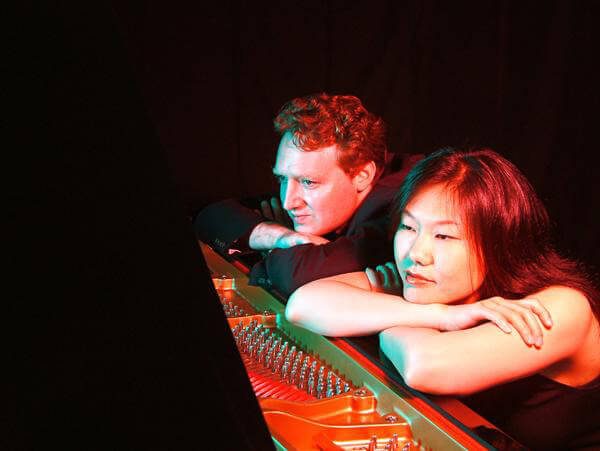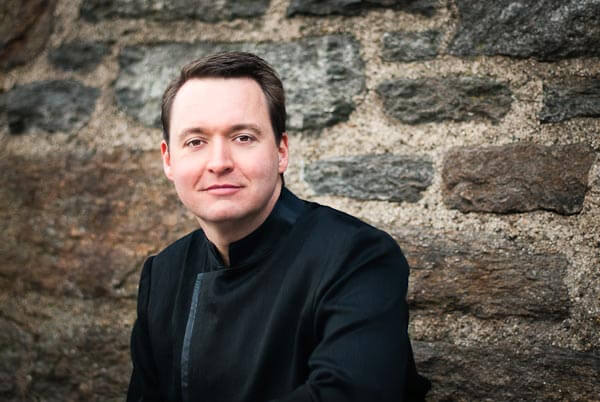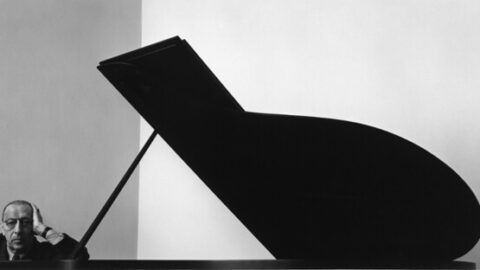 The riotous 1913 premiere performance of Igor Stravinsky’s Le Sacre du printemps (The Rite of Spring) maintains its position as classical music’s greatest ghost story. Every music textbook, history class, and vainglorious declamation of what is (or isn’t) art contains a near-compulsory clause on the Rite — a tale of upset, intrigue, and violence that incited a powerful shift in our collective understanding of music’s ability to enact change. To even the casual music listener, the legacy of Le Sacre endures as contemporary music’s creation myth. The cast of characters in this pivotal play — Nijinsky, Diaghilev, Roerich, Piltz — now occupies a court of legend. In 2013, the work’s centennial, performances across the world are reconstructing, re-imagining, and venerating Stravinsky’s ballet. One such celebration took place Thursday, June 13, 2013 at Manhattan’s (le) Poisson Rouge. The Rite of Spring was presented in it’s entirety in a version for four pianos and two percussionists.
The riotous 1913 premiere performance of Igor Stravinsky’s Le Sacre du printemps (The Rite of Spring) maintains its position as classical music’s greatest ghost story. Every music textbook, history class, and vainglorious declamation of what is (or isn’t) art contains a near-compulsory clause on the Rite — a tale of upset, intrigue, and violence that incited a powerful shift in our collective understanding of music’s ability to enact change. To even the casual music listener, the legacy of Le Sacre endures as contemporary music’s creation myth. The cast of characters in this pivotal play — Nijinsky, Diaghilev, Roerich, Piltz — now occupies a court of legend. In 2013, the work’s centennial, performances across the world are reconstructing, re-imagining, and venerating Stravinsky’s ballet. One such celebration took place Thursday, June 13, 2013 at Manhattan’s (le) Poisson Rouge. The Rite of Spring was presented in it’s entirety in a version for four pianos and two percussionists.

Excerpts from Petrouchka and The Firebird, Stravinsky’s two other iconic dance pieces, preceded Le Sacre on the program. The distinguished pianist Jenny Lin began the evening with a solo arrangement of the Infernal Dance from 1910’s The Firebird. A packed house sat riveted by Lin’s appropriately bombastic (if a bit taciturn) execution, which quickly set a tone for the whole evening. Even with all of the emotional dynamism required to perform these intricate works, upright piano simply leaves something to be desired.
With the inherent timbral limitations of piano arrangement understood and acknowledged, the program regained some momentum with Stephanie Ho and Saar Ahuvia’s duo interpretation of the finale music from 1910-11’s Petrouchka. No shade intended towards Ms. Lin, whose Infernal Dance was perfectly well executed, but hearing such iconic works reduced from the grandiosity of full orchestration can be a bitter pill to swallow. By the end of these two numbers, though, the audience was fully acclimated to the change in instrumentation.

For Le Sacre, the centerpiece of the program, pianists Lin, Ho, and Ahuvia were joined by fellow keyboardist Stephen Gosling and percussionists Jared Soldiviero and Matt Smallcomb. The execution was thoughtful, nuanced and relatively faithful. Conductor (and SONOS Chamber Orchestra founder/director) Erik E. Ochsner gave a heartfelt interpretation, but conducting pianists is sort of like herding cats — as musicians less used to being guided by a conductor than orchestral instrumentalists, there were occasional discrepancies in rubato as interpretive standpoints differed.
Overall, though, Le Sacre du Printemps for four pianists successfully found moments of powerful affect. The dire syncopation of the Spring Rounds, in particular, held as much gravity as they might with eighty or so additional players, walking the fine line between throbbing and plodding rhythm with apparent ease. The staggering finale was taken at cutthroat speed, adding daredevil thrills to perhaps the most riveting instance of Stravinsky’s cut-and-paste style.
The recipe was all there — dedicated players, a packed venue, strong drinks — so where was the pandemonium? Though the audience was ostensibly enthusiastic, they were also contentedly sedentary. The performance was observed in respectful silence over kale salads and edamame. In short, the crowd was boring.

Maestro Ochsner, before beginning the Rite, joked with the crowd about the work’s historical impact. If anyone booed, he declared, he’d consider the reaction a compliment. Subtextually, he was inviting responses that abandoned etiquette, as audiences at the 1913 premiere did. It begs the question: while we honor this iconic work with extravagant celebrations, are we honoring it’s impact by treating it with the same passive deference as those masterworks whose merits were never disputed?
I was at a hardcore show featuring queercore pioneers Limp Wrist in the exact same space, on the exact same stage, just a few days later. I got kicked squarely in the face as the crowd whipped itself into true fervor. This audience was interacting with the sounds around them — challenging each other and themselves to the blown out subwoofer’s pounding roar. Between the two evenings, I know where more social change was brewing. What would Stravinsky think?
























